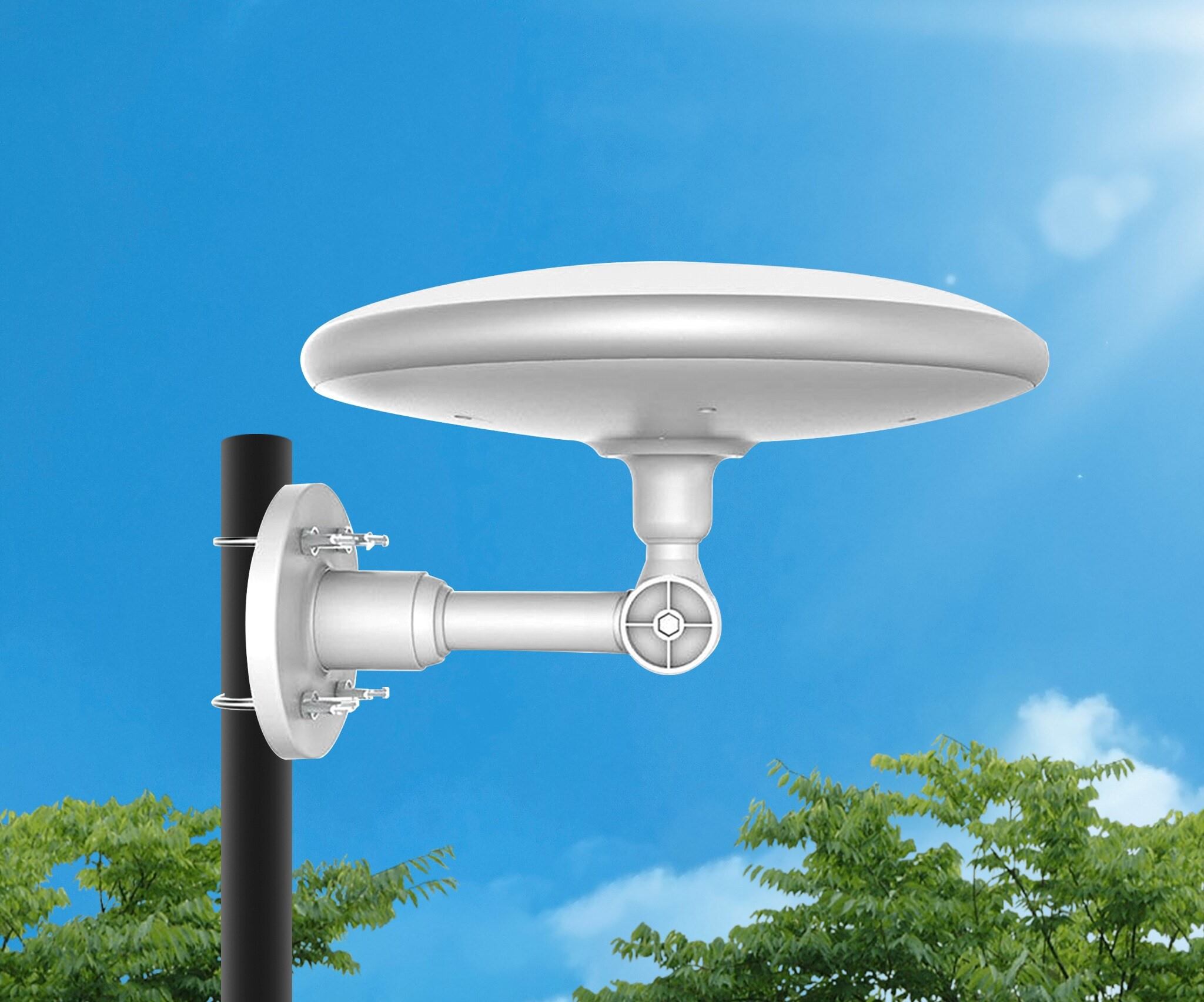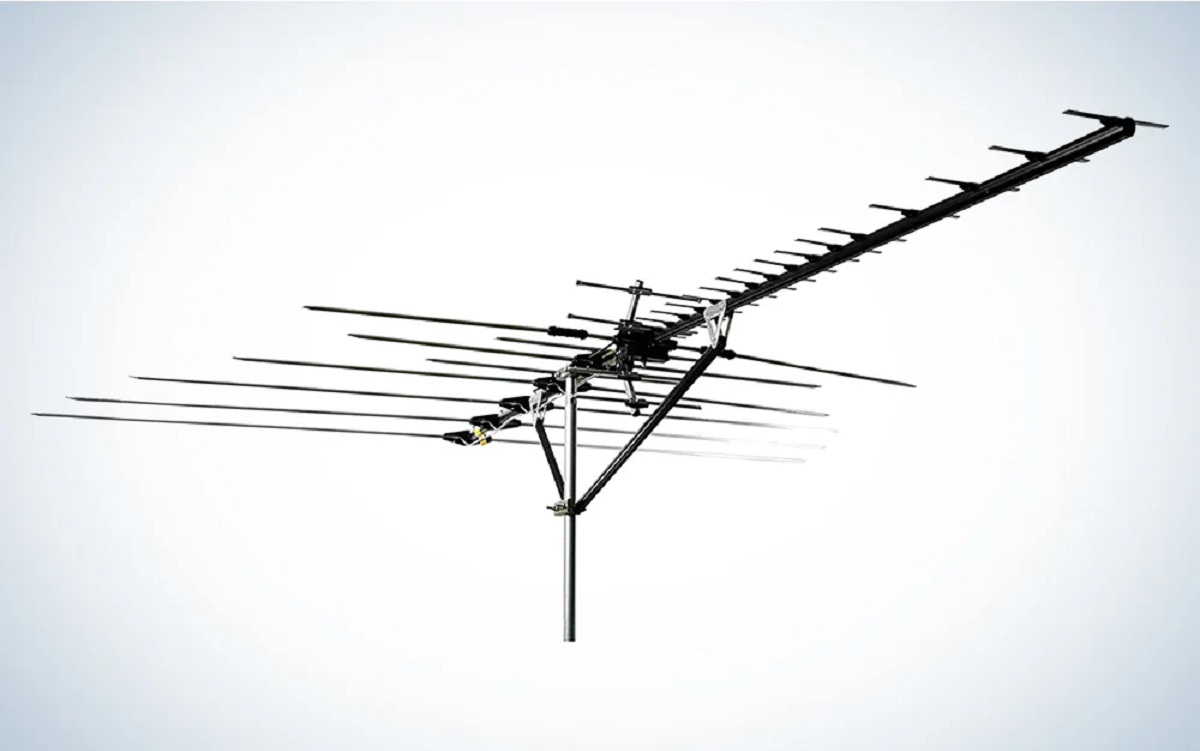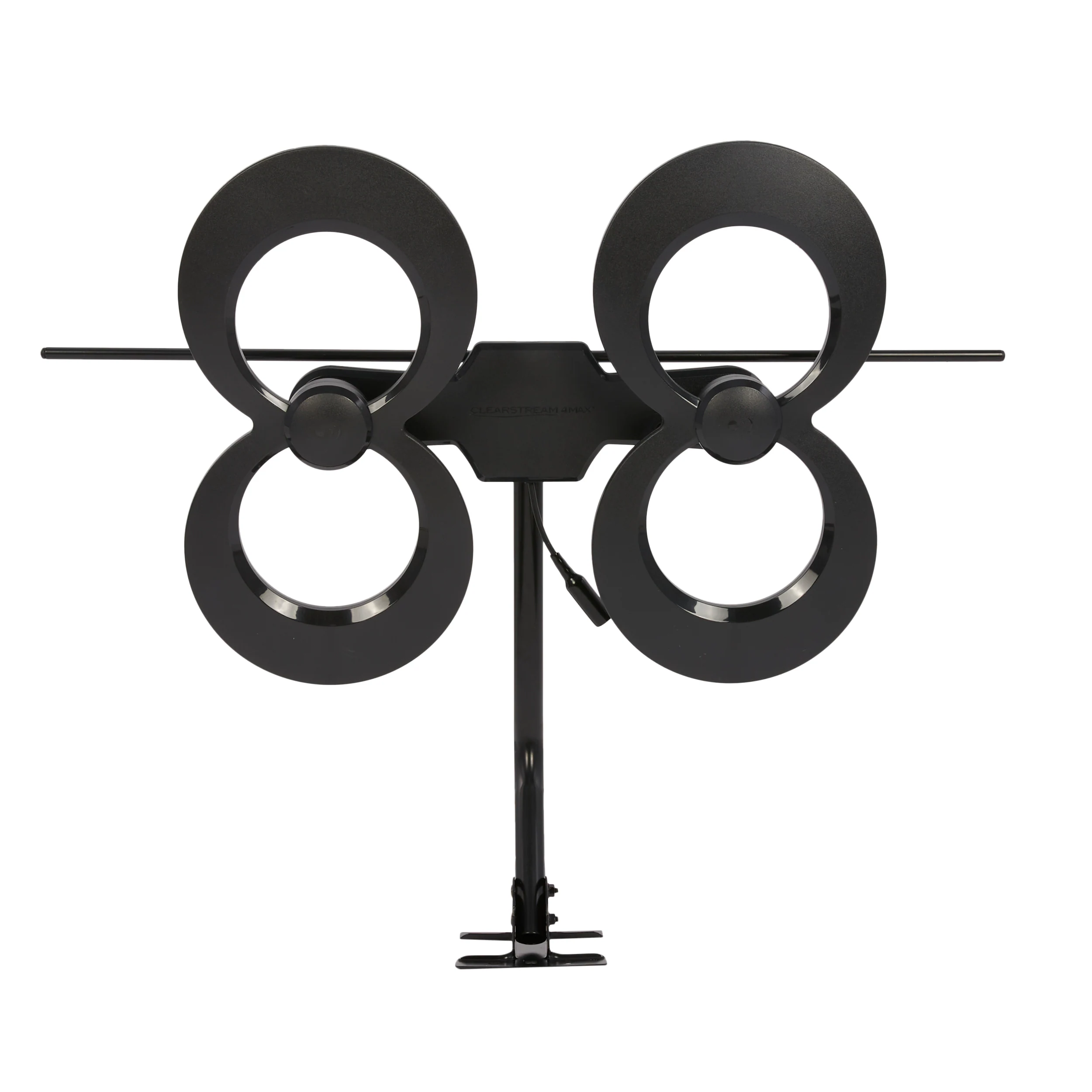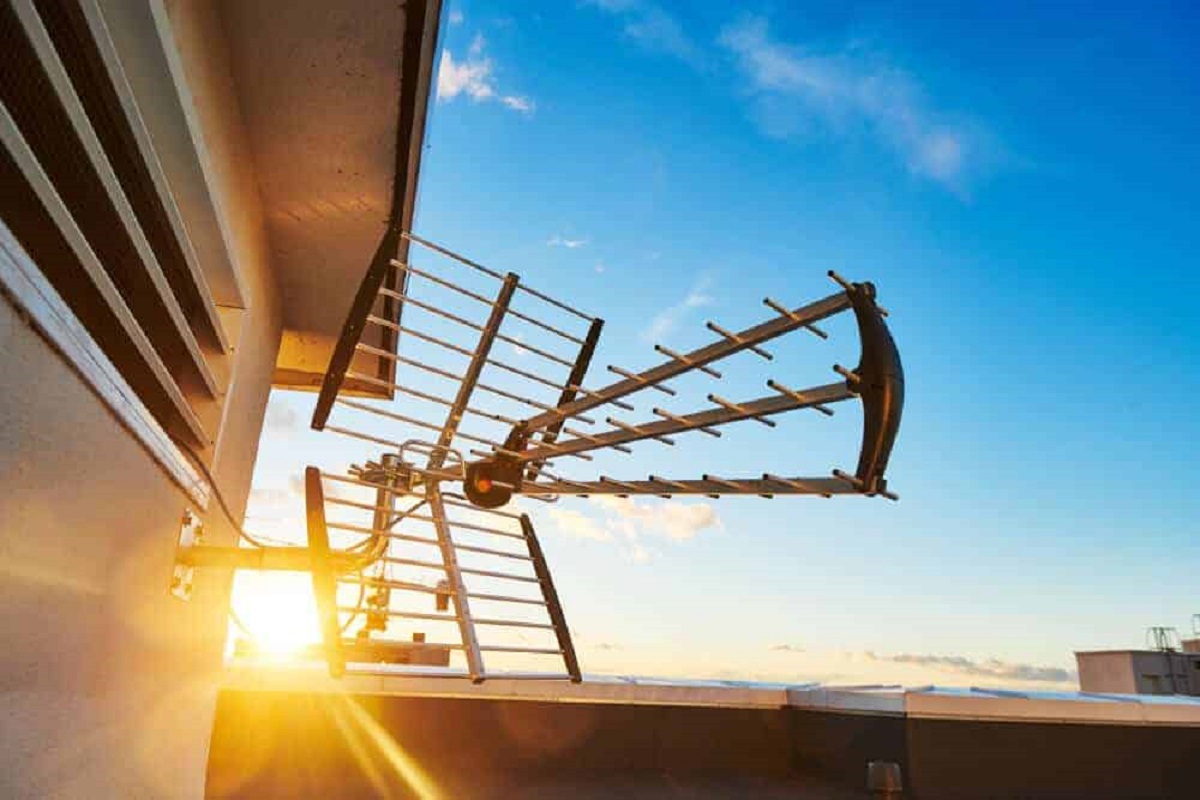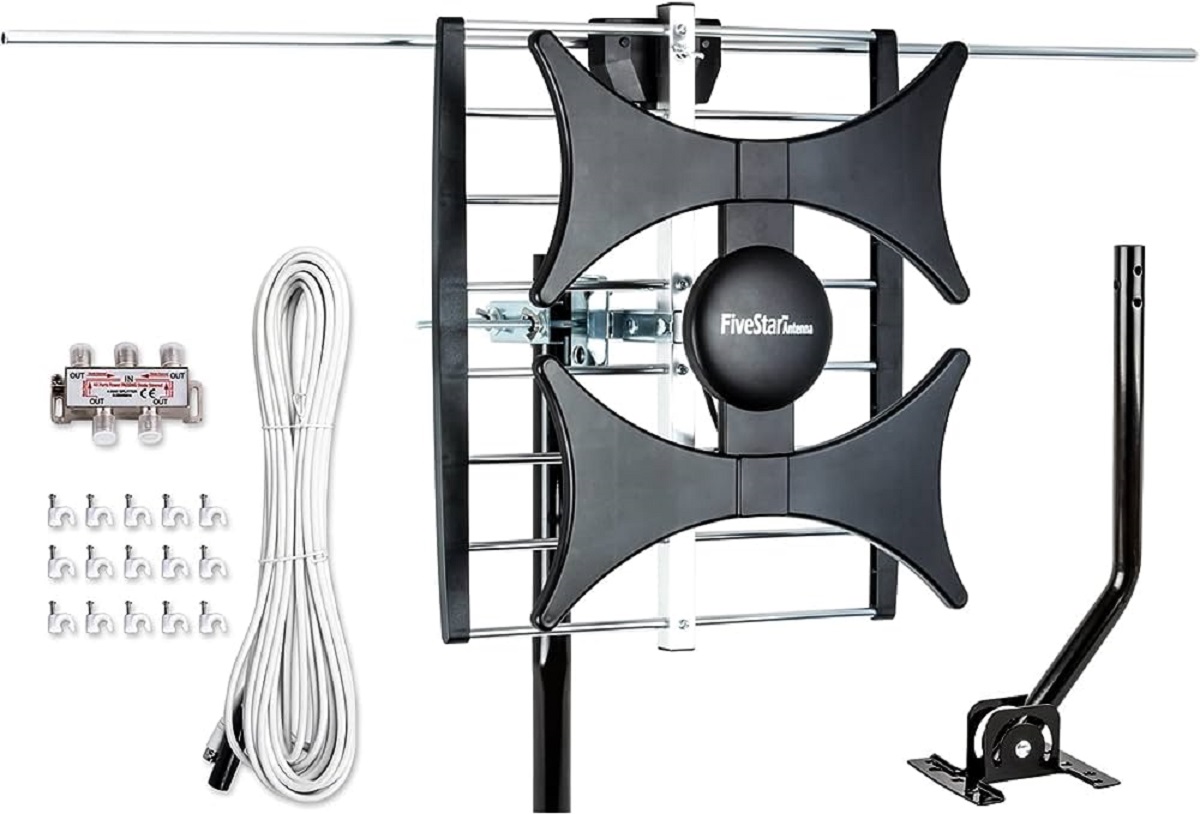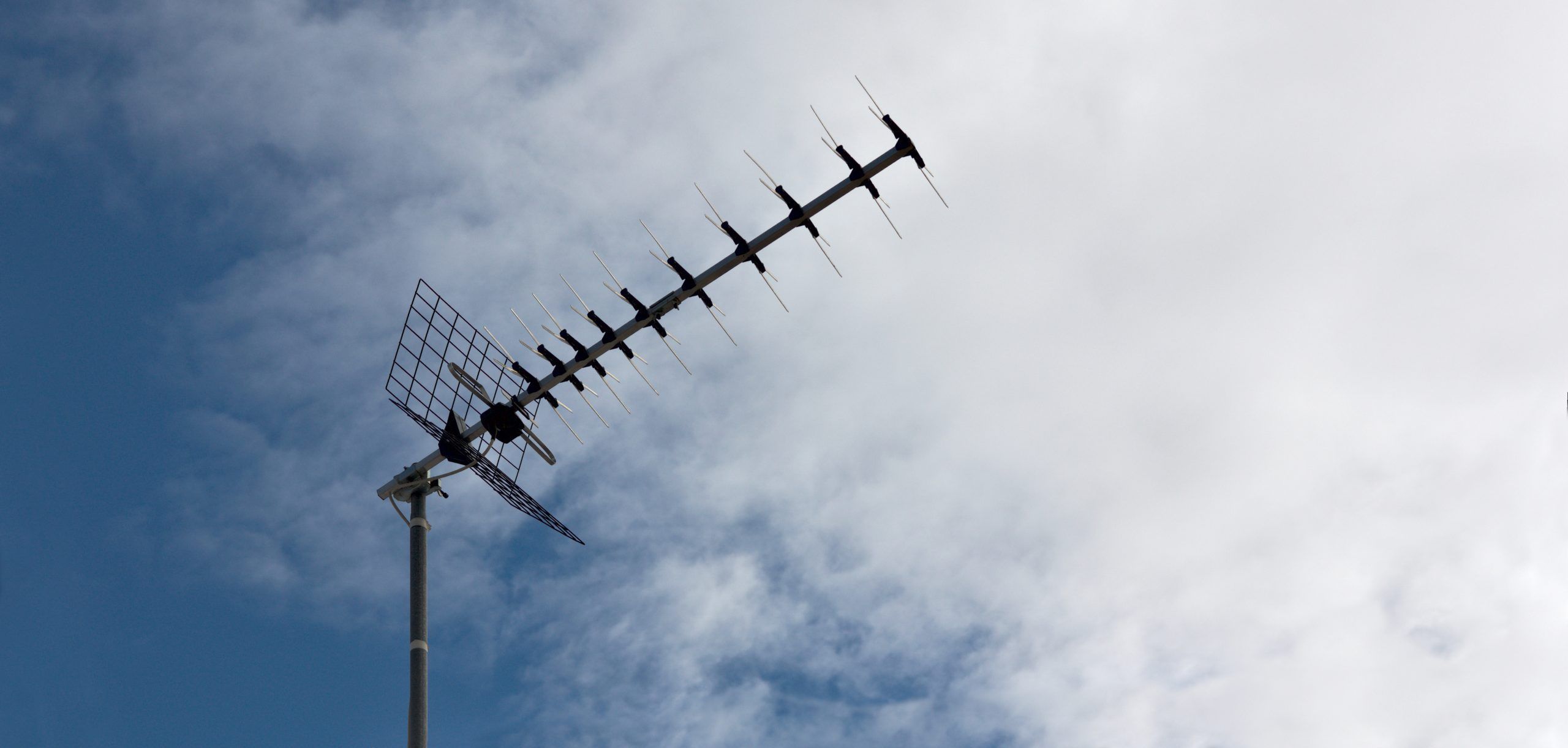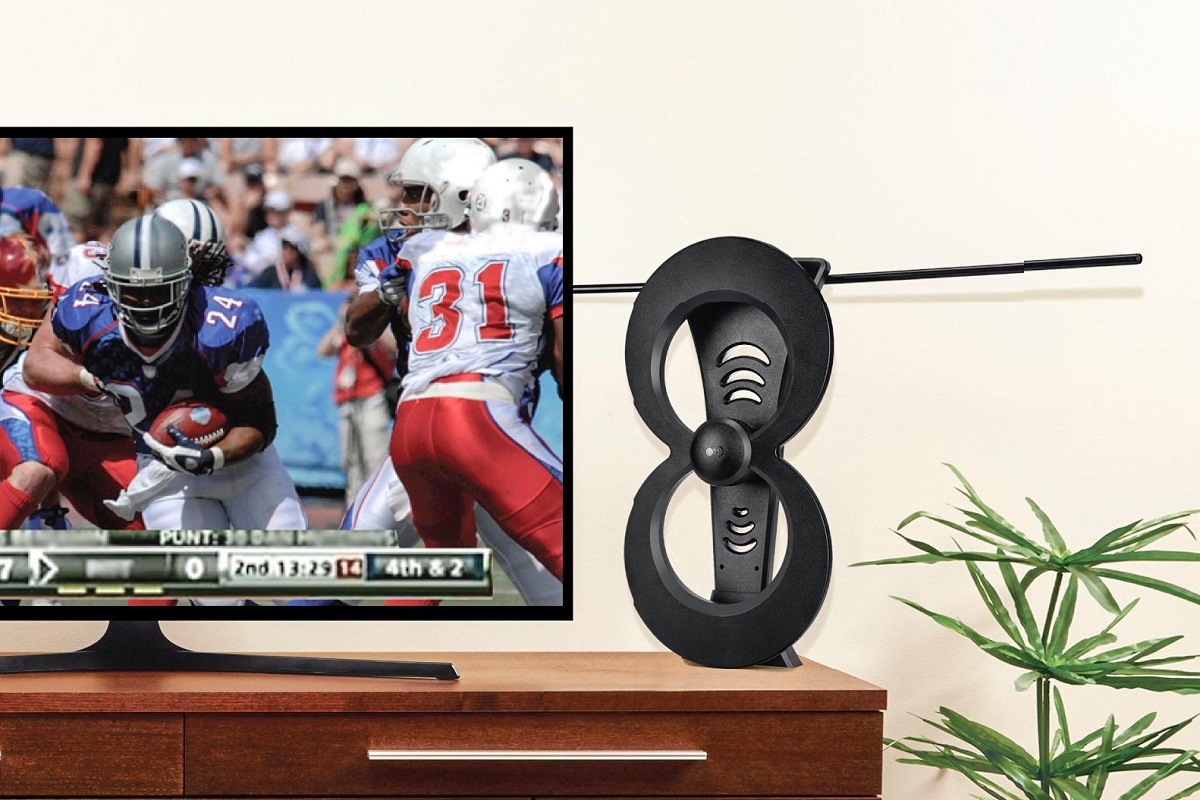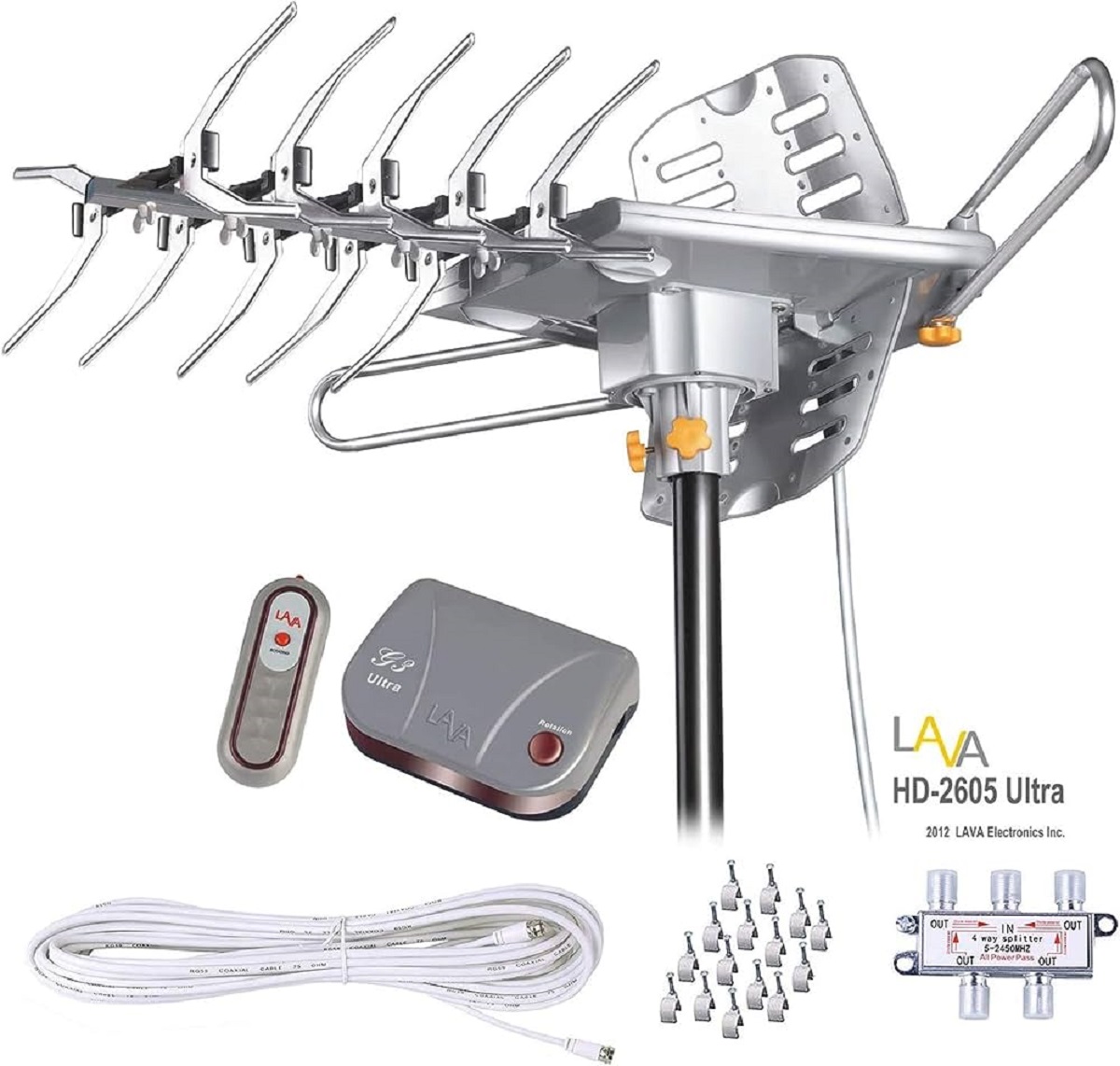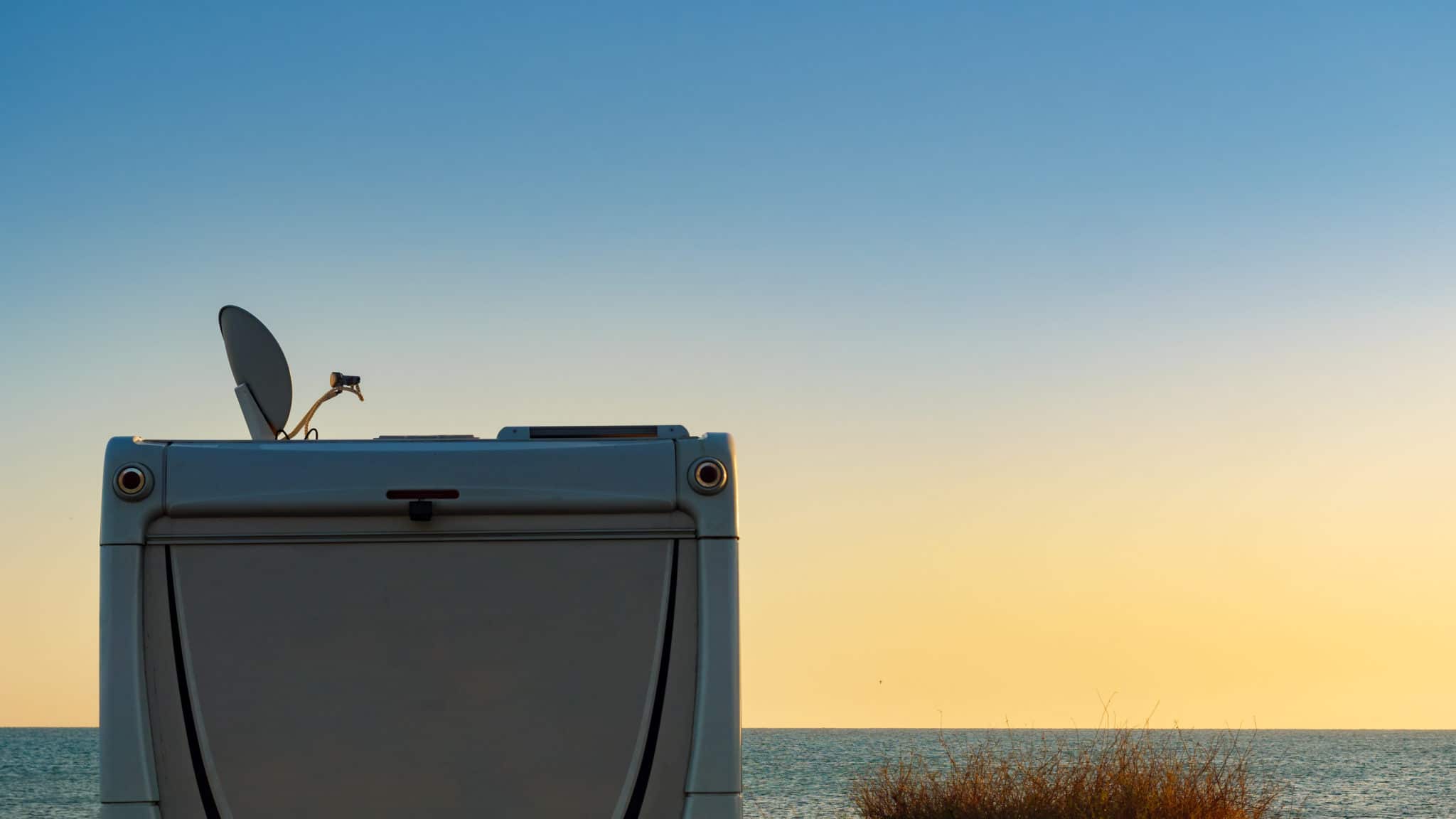Introduction
Welcome to our guide on how to make an omnidirectional TV antenna. Whether you are tired of paying for cable or simply want to enhance your TV signal for better reception, building your own antenna can be a cost-effective and rewarding project. With an omnidirectional antenna, you can pick up signals from multiple directions, allowing you to access a wide range of channels with improved clarity and stability.
By following the step-by-step instructions outlined in this guide, you will be able to construct your own omnidirectional TV antenna using easily accessible materials. With a little effort and patience, you can enjoy free over-the-air broadcast television from various channels without the need for a subscription or costly cable installations.
This DIY project is suitable for anyone with basic crafting skills and can be completed within a few hours. By the end of this guide, you will have a functional omnidirectional TV antenna that will provide you with access to a multitude of channels in your area.
Before we dive into the construction process, let’s take a look at the materials you will need to gather.
Materials Needed
Before you begin building your omnidirectional TV antenna, it’s essential to gather the necessary materials. Most of these items can be easily obtained from your local hardware store or online retailers. Here’s a list of what you’ll need:
- Copper wire: A length of copper wire is the core component of your antenna. Opt for a solid copper wire with a gauge suitable for your specific needs.
- Coaxial cable: Ensure you have a coaxial cable of sufficient length to connect your antenna to your TV or set-top box.
- Coaxial cable connector: You’ll need an F-type coaxial cable connector to attach the coaxial cable to your antenna.
- PVC pipe: To create a sturdy base for your antenna, obtain a PVC pipe with a diameter that can accommodate the copper wire.
- Electrical tape: Use electrical tape to secure and insulate the connections of the antenna elements.
- Wire cutters and strippers: These tools are necessary for cutting and stripping the copper wire to the required length.
- Measuring tape or ruler: You’ll need a measuring tool to ensure accurate cutting of the wire and other components.
- Marker or pen: Use a marker or pen to mark the measurements and make guidelines during the construction process.
- Mounting hardware: Depending on where you plan to place your antenna, gather the appropriate mounting hardware, such as screws, clamps, or brackets.
Having these materials ready before starting the construction will ensure a smooth and efficient building process. Now that you have everything you need, let’s move on to the step-by-step instructions for creating your omnidirectional TV antenna.
Step 1: Gather your materials
The first step in building your omnidirectional TV antenna is to gather all the materials you will need for the project. Make sure you have the following items:
- Copper wire: Choose a solid copper wire with the appropriate gauge for your antenna. The length of the wire will depend on the design and size of your antenna.
- Coaxial cable: Select a coaxial cable of sufficient length to connect your antenna to your TV or set-top box. Ensure that the cable has an F-type connector.
- Coaxial cable connector: You will need an F-type coaxial cable connector to attach the coaxial cable to your antenna.
- PVC pipe: Obtain a PVC pipe with a diameter that can accommodate the copper wire. This will serve as the base and support for your antenna.
- Electrical tape: Use electrical tape to secure and insulate the connections of the antenna elements.
- Wire cutters and strippers: These tools are essential for cutting and stripping the copper wire to the required length.
- Measuring tape or ruler: Have a measuring tool handy to ensure accurate cutting of the wire and other components.
- Marker or pen: Use a marker or pen to mark the measurements and make guidelines during the construction process.
- Mounting hardware: Depending on where you plan to place your antenna, gather the appropriate mounting hardware, such as screws, clamps, or brackets.
Once you have collected all the necessary materials, you are ready to move on to the next step: cutting the copper wire.
Step 2: Cut the copper wire
Now that you have gathered all the materials, it’s time to cut the copper wire for your omnidirectional TV antenna. Follow these steps to ensure the wire is cut to the appropriate length:
- Measure the desired length: Use a measuring tape or ruler to determine the length of wire needed for your antenna. The length will depend on the design and size of your antenna, so refer to your antenna plans or specifications.
- Mark the measurements: Use a marker or pen to mark the measurement points on the copper wire. This will serve as a guideline for cutting.
- Cut the wire: With the help of wire cutters, carefully cut the copper wire at the marked measurement points. Ensure that your cuts are clean and straight for a precise fit.
Once you have cut the copper wire to the required length, you are ready to move on to the next step: creating the antenna reflector.
Step 3: Create the antenna reflector
After cutting the copper wire, the next step in building your omnidirectional TV antenna is to create the antenna reflector. The reflector helps to focus and enhance the signal strength of your antenna. Follow these steps to create the reflector:
- Measure and mark the dimensions: Using a measuring tape or ruler, determine the dimensions for the reflector. This will vary depending on the design and size of your antenna. Mark these measurements on a suitable material that will serve as the reflector.
- Cut the reflector material: Carefully cut the material along the marked measurements using a cutting tool such as scissors or a utility knife. Ensure that your cuts are precise and straight.
- Position the reflector: Place the reflector behind the copper wire elements in a position that allows for maximum signal reflection. It should align with the center of the antenna and provide a surface for the signal to bounce off.
- Secure the reflector: Use adhesive or suitable fasteners to securely attach the reflector to the antenna. This will ensure that it stays in place and maintains the desired shape.
Creating the antenna reflector is an important step in optimizing the signal strength of your omnidirectional TV antenna. Once you have completed this step, you can proceed to the next step: attaching the coaxial cable connector.
Step 4: Attach the coaxial cable connector
Attaching the coaxial cable connector is a crucial step in connecting your omnidirectional TV antenna to your TV or set-top box. Follow these steps to ensure a secure connection:
- Prepare the coaxial cable: Strip off approximately 1 inch (2.5 cm) of the outer insulation of the coaxial cable using wire strippers. Be careful not to damage the inner conductor or shielding.
- Expose the inner conductor: After stripping the outer insulation, carefully fold back the shielding to expose the inner conductor of the coaxial cable. Ensure that no stray strands of the shielding come into contact with the inner conductor.
- Attach the coaxial cable connector: Insert the exposed inner conductor into the center pin of the coaxial cable connector. Make sure it goes all the way in. Then, slide the outer shielding over the threaded portion of the connector.
- Tighten the connector: Using fingers or a suitable tool, tighten the threaded portion of the coaxial cable connector onto the cable. Ensure that it is securely fastened, but be careful not to overtighten and damage the cable or connector.
Attaching the coaxial cable connector properly will ensure a reliable and high-quality connection between your omnidirectional TV antenna and your TV or set-top box. Once you have completed this step, you can move on to the next step: connecting the antenna elements.
Step 5: Connect the antenna elements
Now that you have attached the coaxial cable connector, it’s time to connect the various antenna elements. Follow these steps to ensure a proper connection:
- Identify the antenna elements: Take a look at your antenna design or plans to identify the specific elements that need to be connected. These may include the main copper wire, additional elements, or any other components.
- Strip the ends of the elements: Use wire cutters or strippers to strip off a small portion of the insulation at the ends of the antenna elements. This will expose the conductive material for better connectivity.
- Secure the connections: Place the stripped ends of the antenna elements together, ensuring that the conductive parts are in contact with each other. Use electrical tape to secure and insulate the connections. Wrap the tape tightly and neatly around the junctions to provide a secure and reliable connection.
Properly connecting the antenna elements is crucial for ensuring an effective omnidirectional TV antenna. Once you have completed this step, you can proceed to the next step: mounting the antenna.
Step 6: Mount the antenna
Mounting your omnidirectional TV antenna is an important step to ensure optimal reception. Follow these steps to properly mount your antenna:
- Select a suitable location: Choose a location for mounting your antenna that offers a clear line of sight to the broadcast towers. The higher the elevation, the better the reception will be.
- Secure the mounting hardware: Depending on the type of mounting hardware you have, follow the manufacturer’s instructions to securely attach the antenna to a pole, mast, or other suitable structure.
- Orient the antenna: Position the antenna so that it is parallel to the ground and perpendicular to the direction of the broadcast towers. This will allow it to receive signals from all directions evenly.
- Secure the antenna: Once the antenna is in the desired position, tighten any clamps, screws, or brackets to secure it in place. Ensure that it is stable and doesn’t wobble or shift during strong winds or vibrations.
Properly mounting your omnidirectional TV antenna is essential for maximizing its performance and reception quality. Once you have completed this step, you are ready for the final step: testing your omnidirectional TV antenna.
Step 7: Test your omnidirectional TV antenna
After completing the construction and mounting of your omnidirectional TV antenna, it’s time to put it to the test. Follow these steps to ensure that your antenna is functioning effectively:
- Connect the antenna: Using the coaxial cable you attached earlier, connect your omnidirectional TV antenna to your TV or set-top box. Ensure that the connection is secure.
- Tune your TV: On your TV or set-top box, navigate to the menu or settings and perform a channel scan or auto-tune. This will enable the device to search for available channels in your area.
- Check signal strength: Once the channel scan is complete, navigate to a channel to check the signal strength and quality. Pay attention to any pixelation, freezing, or signal drops that may indicate a weak signal or improper antenna placement.
- Adjust antenna position: If you’re experiencing weak signal or poor reception, you may need to adjust the positioning of your antenna. Try rotating the antenna or changing its elevation to optimize signal reception.
- Repeat channel scan: After adjusting the antenna, repeat the channel scan process to see if there is any improvement in the signal strength and quality of the available channels.
Testing your omnidirectional TV antenna is essential to ensure that it is functioning properly and providing reliable reception. By following this step, you can make necessary adjustments to optimize the performance of your antenna.
Congratulations! You have successfully completed all the steps to make and test your own omnidirectional TV antenna. Now you can start enjoying a wide range of free over-the-air broadcast television channels without the need for a subscription or expensive cable service.
Conclusion
Building your own omnidirectional TV antenna is a rewarding and cost-effective project that can enhance your TV viewing experience. By following the step-by-step instructions outlined in this guide and using readily available materials, you can construct a functional antenna that allows you to access a multitude of free over-the-air broadcast television channels.
Throughout the construction process, we covered the necessary steps, including gathering the materials, cutting the copper wire, creating the antenna reflector, attaching the coaxial cable connector, connecting the antenna elements, mounting the antenna, and testing its performance.
With proper positioning and adjustments, your omnidirectional TV antenna can provide you with improved reception, enhanced signal strength, and access to a wider range of channels. Remember to experiment with the antenna placement and orientation to achieve the best results.
Now that you have completed the construction and testing of your omnidirectional TV antenna, you can enjoy the benefits of free over-the-air broadcast television without the need for monthly subscriptions. Sit back, relax, and enjoy a wide selection of high-quality channels and content right at your fingertips.
Thank you for following along with our guide. We hope this has been a helpful resource for creating your own omnidirectional TV antenna. Happy watching!







